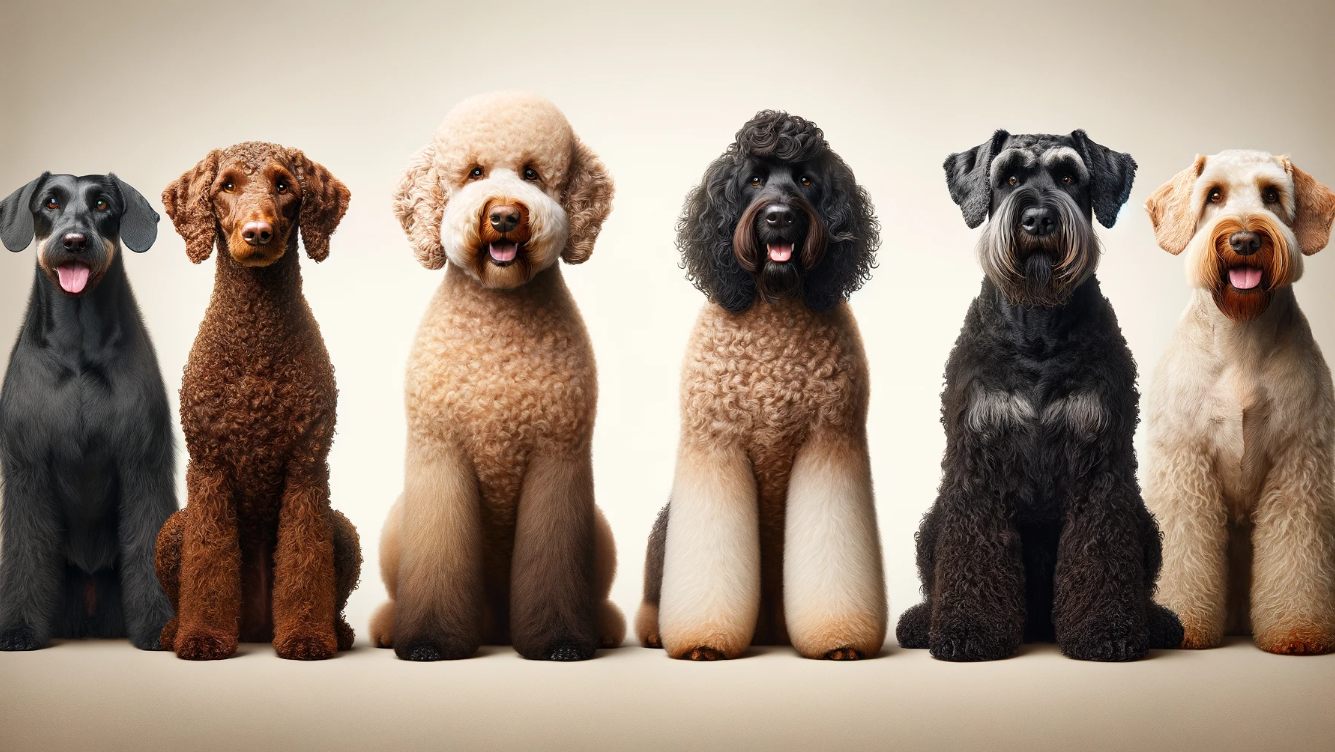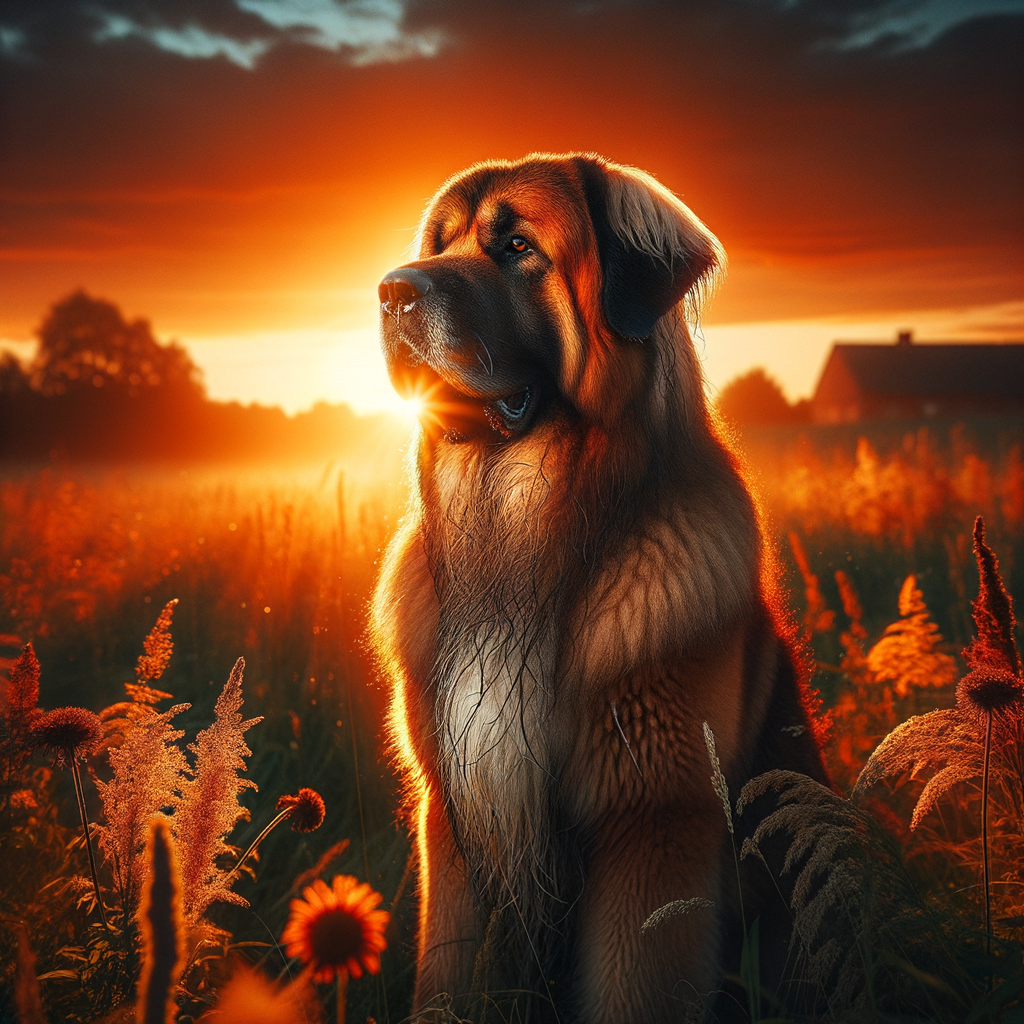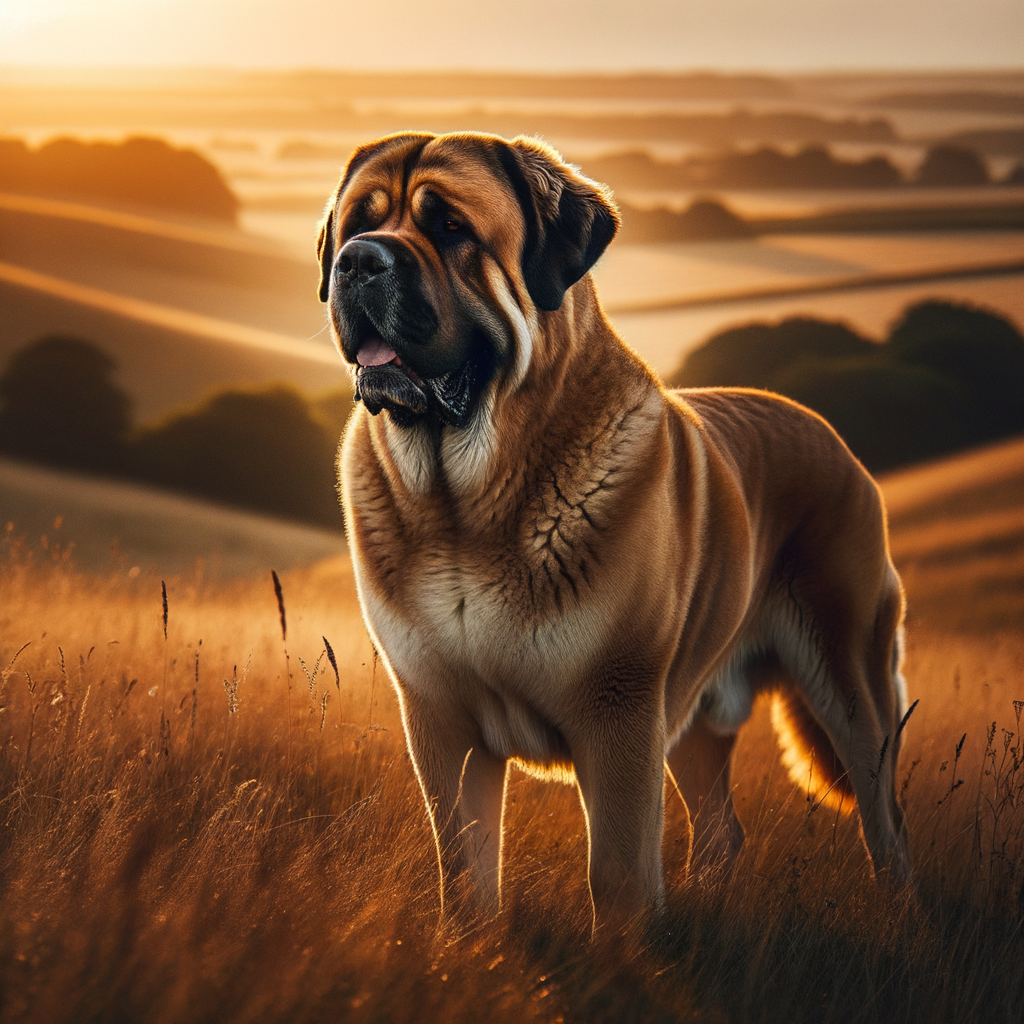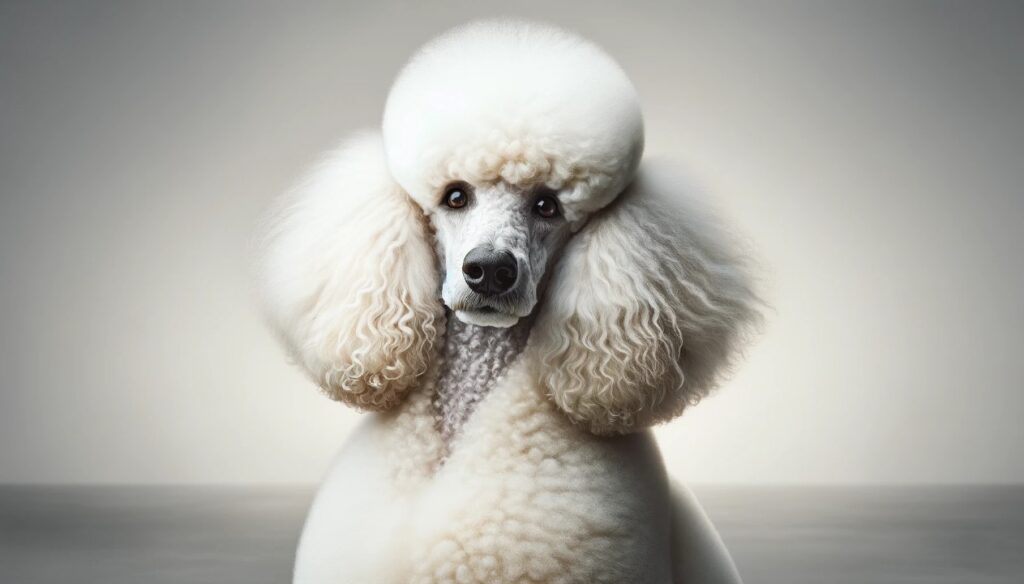As a holistic veterinarian, I’ve come across many pet parents who love the companionship of a large dog, but are put off by the thought of constant shedding. Low shedding large dog breeds might just be the solution. These breeds, while big in size, shed less hair compared to their counterparts making life a bit easier, and cleaner, for their human families.

The benefits of low shedding large dog breeds are endless. Not only do they contribute less to the fur coating your furniture, but they’re also a blessing for those with allergies. Many low shedding breeds are considered hypoallergenic, making them a great choice for those who love dogs but don’t want to be constantly sneezing. The minimized shedding also means less time spent on cleaning up fur and more time spent on bonding with your four-legged friend.
Don’t let the thought of heavy shedding deter you from welcoming a large dog breed into your home. There are plenty of low shedding large dog breeds that offer all the love and companionship, with fewer tumbleweeds of fur. In the end, it’s all about finding the perfect fit for your family and lifestyle.
The Importance of Grooming for Low Shedding Breeds
Imagine the joy of having a large dog breed, with all their boundless energy and affection, without the stress of dealing with copious amounts of shed hair. That’s the beauty of low shedding large dog breeds! However, it’s important to remember that less shedding doesn’t mean no grooming. In fact, proper grooming is especially vital to maintain the healthy and shiny coat of these big, minimal-shedding pals.
Grooming Routines for Maintaining a Healthy Coat
In my experience as a vet, I’ve found that grooming gloves can be very effective for these breeds. They are gentle on the skin and can help remove loose hairs from the coat. Additionally, they give your pet a nice massage, which most dogs absolutely love!
Believe it or not, a well-maintained coat starts with good nutrition. Providing your dog with a balanced diet rich in proteins, vitamins, and omega fatty acids can contribute to a healthy skin and coat. Next, regular grooming routines are essential, but the frequency and details of these routines may vary depending on the breed.
Tools and Techniques for Low Shedding Large Dogs
When it comes to grooming, one size doesn’t fit all. The tools you’ll need depend on the coat type of your low shedding large dog breed. Here are some common grooming tools:
– Slicker Brush: This type of brush works well for dogs with long and medium-length hair. It helps remove loose hair and prevent matting.
– Bristle Brush: Ideal for short-haired dogs, this brush is great to remove loose hair and stimulate the skin.
– Comb: A comb with both wide and narrow teeth can be handy for tackling tangles in long-haired dogs.
– Nail Clippers: Keeping your dog’s nails trimmed is essential for their comfort and health. There are various types of nail clippers to choose from, so find one that works best for you and your pet.
– Dog Shampoo: Always use a dog-specific shampoo that is suitable for your pet’s skin type. Human shampoos could upset the pH balance of your dog’s skin and cause irritation.
Now, let’s explore some grooming techniques:
– Brushing: Always brush your dog’s coat in the direction of hair growth. If you encounter a mat, hold it at the base and gently comb it out from the tip up.
– Bathing: Wet your dog thoroughly before applying shampoo. Rinse thoroughly as well, as any residual shampoo can cause skin irritation.
– Nail Trimming: If you can hear your dog’s nails clicking on the floor, they’re likely too long. Be careful not to cut into the quick, the sensitive part of the nail, as it can cause pain and bleeding.
Remember, grooming is also a bonding time for you and your pet. Use it as an opportunity to check for any unusual skin conditions or abnormalities. Yes, maintaining a low shedding large dog breed may require some effort, but the love, loyalty, and companionship you get in return make it all worth it.

Top Low Shedding Large Dog Breeds
For those who love large dogs but don’t want to spend their free time vacuuming up fur, there are plenty of options available. Here, we’ll discuss a few of the top low shedding large dog breeds that might be the perfect addition to your family.
Hypoallergenic Giants: The Airedale Terrier
Often referred to as the ‘King of Terriers’, the Airedale Terrier is the largest of all terrier breeds. They are known for their hard, wiry coat which is hypoallergenic, making them a great choice for anyone with allergies. However, their coats do require regular grooming to keep them looking their best.
Airedales are intelligent and energetic dogs, known for their playful and protective nature. They are great with families and enjoy plenty of exercises, so they would suit an active household.
The Majestic Afghan Hound
With their long, silky coats, Afghan Hounds are a truly majestic sight. While you might assume their long hair means they shed a lot, this breed is actually one of the low shedding large dog breeds. Their unique coat is more similar to human hair than typical dog fur, and it falls out less frequently.
Afghan Hounds are known for their dignified and somewhat aloof personality. They require regular exercise and grooming to keep their beautiful coats tangle-free. Despite their aristocratic demeanor, they are known to be quite playful and clownish when they let their guard down.
The Giant Schnauzer: A Low Shedding Powerhouse
Giant Schnauzers are large, powerful dogs with a dense, wiry coat that sheds minimally. While their coat does require regular grooming, you won’t find hair all over your clothes or furniture with this breed.
This breed is known for being intelligent, strong-willed, and energetic. They require plenty of mental and physical stimulation to keep them happy and well-behaved.
The Versatile Standard Poodle
Standard Poodles are large, athletic dogs known for their curly, hypoallergenic coats. Despite their posh image, Standard Poodles are highly versatile dogs that excel in various dog sports like agility and obedience.
They’re intelligent, easy to train, and generally good with children and other pets. Their curly coats don’t shed much, but they do require regular grooming to prevent matting.
The Regal Irish Water Spaniel
The Irish Water Spaniel is one of the oldest and most distinctive spaniel breeds. They have a tightly curled, liver-colored coat that sheds very little.
These dogs are known for their playful, energetic nature and their love for the water. However, they are not the best choice for first-time dog owners as they can be quite independent and require firm, consistent training.
Remember, while these breeds are known for their minimal shedding, all dogs shed to some degree. Regular grooming can help keep shedding to a minimum and keep your dog’s coat healthy. Each breed has its unique characteristics, so it is essential to choose a breed that best fits your lifestyle.
The Giant Schnauzer: A Low Shedding Powerhouse
When researching low shedding large dog breeds, one cannot simply overlook the Giant Schnauzer. This breed is a real powerhouse, combining physical strength with a lively personality. The best part? It’s also one of the large dogs with minimal shedding.
Characteristics of the Giant Schnauzer
The Giant Schnauzer is a robust, intelligent, and versatile breed. Originating from Germany, they were initially bred for herding and guarding purposes. Today, with their high energy levels and protective instinct, they serve as excellent family dogs, especially if you have a spacious backyard where they can release their energy.
These dogs are well-built and muscular, standing at 25.5-27.5 inches tall for males, and 23.5-25.5 inches for females. Their distinctive feature is a dense, wiry outer coat and soft undercoat that’s designed to protect them from harsh weather conditions.
The good news for allergy sufferers and clean freaks is that the Giant Schnauzer is a hypoallergenic breed that doesn’t shed much. But don’t be fooled into thinking their coat doesn’t need care. It’s important to maintain their coat to keep them looking sharp and feeling comfortable.
Grooming Needs of the Giant Schnauzer
While Giant Schnauzers are considered low maintenance large dog breeds due to their low shedding, their grooming needs shouldn’t be neglected. Their double coat needs regular brushing to prevent matting and skin issues.
Grooming a Giant Schnauzer is a two-part task. First, their wiry top coat needs to be brushed at least twice a week using a slicker brush or a comb with wide teeth. This helps remove any loose hair and prevents tangles.
Second, due to their fast-growing hair, they need clipping or hand-stripping every 5-8 weeks to maintain a neat appearance. Hand-stripping involves plucking the old, dead hair by hand or using a stripping knife. This can be time-consuming but is the best way to maintain the texture and color of their unique coat.
Moreover, their beards and eyebrows can get dirty quickly, so it’s good to clean them after meals. Regular ear cleaning and nail trimming are also essential to keep your Giant Schnauzer healthy.
So, if you are looking for a large, protective, and low shedding large dog breed, the Giant Schnauzer could be the perfect match. Their minimal shedding is a big plus, but remember, their coat needs regular care to keep them comfortable and at their best. If you can commit to their grooming needs, you’ll have a loyal, energetic, and dashing canine companion at your side.

The Versatile Standard Poodle
When it comes to low shedding large dog breeds, the Standard Poodle is a standout. These dogs are not only known for their intelligence and elegance, but also for their hypoallergenic coats, which make them an ideal choice for those who are prone to allergies.
Why Standard Poodles are Great for Allergy Sufferers
Standard Poodles have a dense, curly coat that is more similar to hair than fur. This unique coat type minimizes the amount of dander and loose hair that typically triggers allergies. However, it’s important to note that no breed is entirely hypoallergenic. The term ‘hypoallergenic’ simply means that the dog is less likely to cause an allergic reaction compared to other breeds.
Here are some reasons why Standard Poodles are a great choice for allergy sufferers:
- Less Dander: Standard Poodles produce less dander, a common allergen, compared to other breeds.
- Minimal Shedding: Their curly coats do not shed as much, reducing the amount of allergens in the environment.
- Regular Grooming: Regular grooming can help maintain the hypoallergenic nature of their coats by removing loose hair and dander.
Training and Exercise Needs of Standard Poodles
Standard Poodles are highly intelligent and versatile dogs. They excel in various dog sports such as obedience, agility, and hunting tests. They are quick learners and respond well to positive reinforcement training methods.
Here are some key points to consider when it comes to the training and exercise needs of Standard Poodles:
- Physical Exercise: Standard Poodles are active and energetic dogs. They require regular exercise to keep them physically fit and mentally stimulated. This can include walks, runs, playtime, or participating in dog sports.
- Mental Stimulation: Their intelligence means they also need plenty of mental stimulation. Training sessions, puzzle toys, and interactive games can help keep their minds sharp.
- Socialization: Early socialization is crucial for Standard Poodles. Exposure to different people, environments, and situations can help them grow into well-rounded dogs.
- Training: Standard Poodles are eager to please and highly trainable. Using positive reinforcement methods such as treats, praises, and toys can make training a rewarding experience for them.
In conclusion, the Standard Poodle is a versatile, intelligent, and low shedding large dog breed. They are an excellent choice for those looking for a hypoallergenic dog that is also active and trainable. With proper care, training, and socialization, a Standard Poodle can make a wonderful addition to any family.
The Regal Irish Water Spaniel
If you’re exploring low shedding large dog breeds, the regal Irish Water Spaniel is one breed that can’t be ignored. Known for their distinctive curly coats and playful nature, these dogs are a joy to have around. They are the clowns of the Spaniel family, always full of energy and ready for an adventure.
Unique Features of the Irish Water Spaniel
Irish Water Spaniels are distinguished by their dense, curly coats, which are remarkably water-resistant. This feature was initially bred into the dogs for their original role as water retrievers. The coat is a rich, reddish-brown color, and it sheds very minimally, making it an excellent choice for those who aren’t fond of vacuuming dog hair off their furniture regularly.
These dogs are also tall and athletic, with a robust frame that can stand up to rigorous activities. Irish Water Spaniels are known for their webbed feet, which make them excellent swimmers. Their eyes are a striking amber color, and they have a signature ‘rat tail,’ which is hairless except at the base. This breed is known for its high energy levels and intelligence, making them both engaging and entertaining companions.
Health Considerations for Irish Water Spaniels
While the Irish Water Spaniel is generally a healthy breed, they do have some specific health considerations to keep in mind. One is hip dysplasia, a common problem among larger breeds. Regular vet check-ups and maintaining a healthy weight can help manage this issue.
Another health concern is a thyroid condition known as hypothyroidism, which can lead to obesity, lethargy, and skin issues. This requires medical management, so regular vet visits are crucial.
Lastly, due to their long, hairy ears, Irish Water Spaniels are prone to ear infections. Regular cleaning and check-ups can help prevent this.
Like all breeds, the Irish Water Spaniel needs a balanced diet, regular exercise, and plenty of mental stimulation to stay healthy. They are also a relatively long-lived breed, often reaching 12 to 15 years of age.
In summary, the Irish Water Spaniel is an excellent choice for those looking for low shedding large dog breeds. They are fun-loving, intelligent, and active dogs, perfect for families that love outdoor adventures. While they do have some health considerations, with routine care and monitoring, these issues can be well managed, ensuring your furry friend lives a long, healthy, and happy life.

The Bouvier des Flandres: A Hardy Breed with Minimal Shedding
If you’re on the hunt for low shedding large dog breeds, the Bouvier des Flandres is one to consider. Known for their robust nature and minimal shedding, these dogs are a fantastic choice for those looking to avoid a house covered in fur.
The Robust Nature of the Bouvier des Flandres
The Bouvier des Flandres, often simply referred to as a Bouvier, is a breed from Belgium known for its strength and hardiness. Originally bred for farm work, these dogs are built to withstand tough conditions and rigorous tasks. They’re large, with males reaching up to 27 inches in height and weighing between 70 to 110 pounds. Females are slightly smaller but still make for a strong, sturdy companion.
Apart from their size and strength, Bouviers are also recognized for their double-layered coat that’s rough and shaggy on the outside but soft and insulating underneath. This special coat not only contributes to their unique appearance but also their status as a low shedding large dog breed. While they do lose some hair, it’s usually caught in the outer layer of their coat, significantly reducing the amount of loose hair around your home.
Daily Care for Your Bouvier des Flandres
While Bouviers are low shedders, some grooming is required to keep their coats in top condition. Regular brushing is crucial to prevent matting and to remove any hair that’s shed into the outer layer of their coat. A rake comb is handy for this task, effectively reaching their undercoat and ensuring that any loose hair is removed.
It’s recommended that Bouviers receive a trim every few months. Not only does this keep their shaggy coat manageable, but it also reduces the risk of skin conditions that can occur when hair mats close to the skin. Professional grooming can be beneficial, but with the right tools and a bit of practice, you can also carry out this task at home.
As robust, energetic dogs, Bouviers also require regular exercise to keep them healthy and happy. A daily walk, combined with some playtime, is typically sufficient. However, as they were bred for work, they also thrive when given tasks to perform. Whether it’s obedience training, agility courses, or simply fetching a ball, keeping your Bouvier’s mind and body active is key to their overall well-being.
Lastly, it’s important to note that while Bouviers are generally a healthy breed, they are prone to certain conditions, such as hip dysplasia and eye diseases. Regular check-ups with a trusted vet can help detect any potential issues early.
In sum, the Bouvier des Flandres is a fantastic choice for those seeking low shedding large dog breeds. With their robust nature, unique coat that minimizes shedding, and spirited personality, they make for an exceptional furry friend. Just remember, keeping them happy and healthy requires regular grooming and plenty of exercise.
The Komondor: A Distinctive Low Shedder
If you’re on the hunt for low shedding large dog breeds, then the Komondor should definitely be on your radar. Originally bred as a shepherd dog in Hungary, the Komondor is a large, robust dog known for its unique coat and low shedding properties.
Understanding the Komondor’s Unique Coat
The Komondor’s coat is truly one of a kind. Its dense, corded fur, often compared to dreadlocks or a mop, distinguishes it from most other breeds. This coat doesn’t just give the Komondor its distinctive appearance, it also offers excellent protection against harsh weather and predators.
The cording develops naturally as the puppy matures, though it can be encouraged and managed with proper grooming. Underneath this unique coat is a powerful, muscular body built for endurance and strength. Despite its imposing size and stature, the Komondor is a gentle and affectionate dog that forms strong bonds with its family.
One of the major attractions of the Komondor’s coat is its low shedding properties. The fur, once corded, holds onto loose hairs, preventing them from being scattered around your home. This makes the Komondor an excellent choice for allergy sufferers or those who prefer not to deal with copious dog hair.
Socialization and Training Tips for Komondors
While low shedding is a major plus, aspiring Komondor owners should also be aware of the breed’s exercise and training needs. As a working breed, the Komondor thrives on physical activity and mental stimulation. Regular exercise and play sessions are essential for this breed’s overall health and happiness.
The Komondor is highly intelligent and independent, making it both a joy and a challenge to train. Early socialization is crucial to prevent the breed’s protective instinct from becoming excessive. Training should emphasize positive reinforcement and be consistent to shape a well-behaved, social dog.
- Introduce your Komondor to a variety of people and situations early on.
- Training should be consistent and positive. Harsh methods can lead to a stubborn and uncooperative dog.
- Provide plenty of physical exercises like walks, play sessions, and games.
- Give your Komondor mental stimulation with puzzle toys and obedience training.
Despite the Komondor’s somewhat high-maintenance appearance, its grooming needs are surprisingly moderate. Regular bathing and coat maintenance, such as separating the cords and removing debris, are essential to keep your Komondor’s coat in top form.
Choosing a low shedding large dog breed like the Komondor can help you enjoy the companionship and love of a large dog without the hassle of constant cleaning. With its unique appearance, protective nature, and loyal temperament, the Komondor is a truly distinctive breed that would make a wonderful addition to the right home.
Embracing the Beauty of Low Shedding Large Dog Breeds
As we’ve journeyed through this exploration of low shedding large dog breeds, hopefully, you’ve gained some insights into the variety of options available. From the hypoallergenic Airedale Terrier to the unique Komondor, there’s a large breed dog out there for just about every lifestyle and preference.
Choosing the right dog breed is a significant decision. It affects not only your life but also the life of your new furry friend. A low shedding breed can make cohabitation more pleasant, especially for allergy sufferers, and featuring low maintenance grooming routines.
Remember, while shedding might be a significant factor, the breed’s temperament, energy level, and health considerations should all play a part in your decision. Choosing a dog breed that aligns with your lifestyle ensures a happy and harmonious relationship with your new pet. So, here’s to embracing the beauty and diversity of low shedding large dog breeds.
Frequently Asked Questions
Q1: What are some examples of low shedding large dog breeds?
Some examples of low shedding large dog breeds include the Standard Poodle, Afghan Hound, Irish Water Spaniel, and the Giant Schnauzer.
Q2: Are low shedding large dog breeds hypoallergenic?
While no dog breed is completely hypoallergenic, low shedding large dog breeds tend to produce fewer allergens and can be a good choice for people with allergies.
Q3: Do low shedding large dog breeds require less grooming?
Not necessarily. While low shedding large dog breeds may not require frequent brushing to remove loose hair, they may still require regular grooming to keep their coat healthy and clean.
Q4: Are low shedding large dog breeds good for families with children?
Yes, many low shedding large dog breeds are known for their gentle and friendly nature, making them a great choice for families with children. However, it’s always important to consider the specific temperament and needs of the breed.
Q5: How can I manage the minimal shedding of my large dog breed?
Regular grooming and a healthy diet can help manage the minimal shedding of your large dog breed. Brushing your dog’s coat regularly can help remove loose hair and prevent it from shedding around your home.
Dr. Candy, a holistic veterinarian and certified raw dog food nutrition specialist, graduated from Oklahoma State University in 2009 with a DVM and has since specialized in companion animal nutrition, advocating for species-specific diets. With a background in wildlife rehabilitation and oil spill response, she combines holistic health and conventional medicine in her unique approach to treating chronic diseases, allergies, and autoimmune conditions in pets. As the owner of a veterinary practice in Colorado and an author, Dr. Candy is dedicated to educating pet parents and improving the health and happiness of animals.




